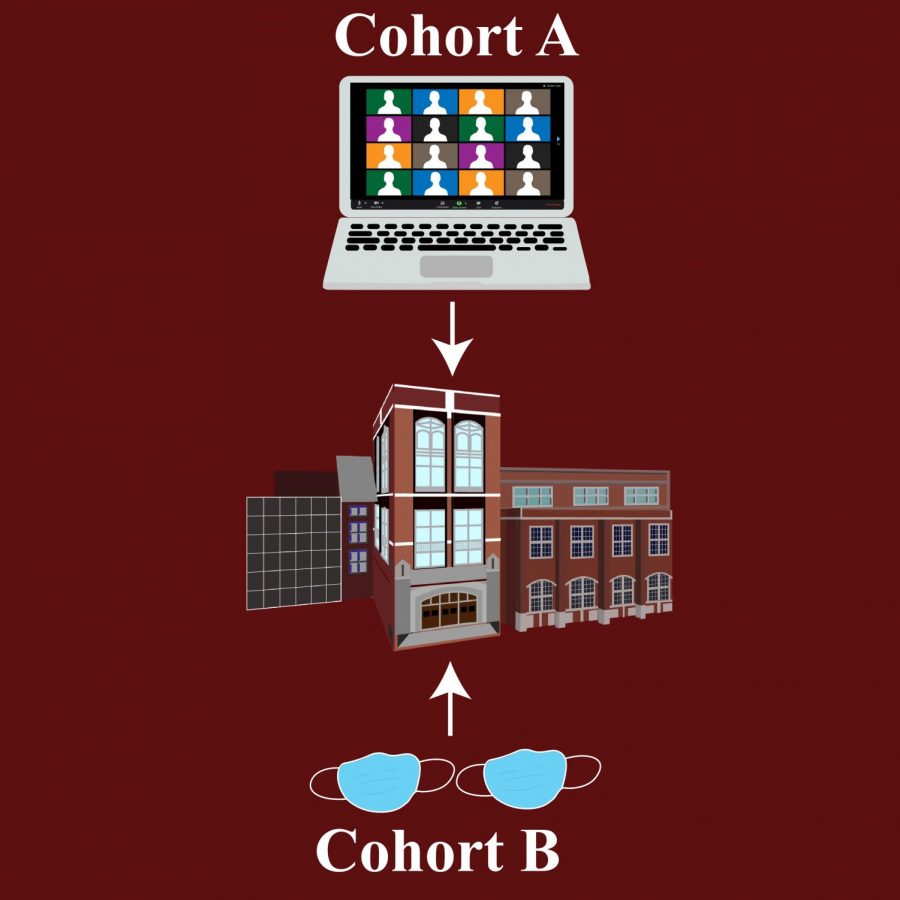The Case Against Cross-Cohort Streaming
October 16, 2020
While cross-cohort streaming can prove effective in some cases, mandating its implementation will cause more harm than good.
This article features the thoughts, opinions, and reflections of Robert Fogel ’21. While Fogel is not a Maroon staff member, he has participated in cross-cohort streaming as a part of his senior A.T. U.S. Government and Economics class.
Scarsdale High School’s recent announcement that students will soon start cross-cohort streaming has led to yet another controversy in the school community. The purpose of the new plan is to increase synchronous learning time to allow students to learn more material. A significant percentage of students, the group most impacted by the decision, disagree with the administration’s outlook and are against such measures, and not because we want less school. Although this method of learning is effective when used sparingly, requiring teachers to regularly integrate this practice will have the converse effect of its intention, leading to ineffective learning and damaging students’ mental and physical health.
There are benefits to cross-cohort streaming. I have had a great experience thus far in my one class that has already begun to cross-stream—Mr. Harrison’s twelfth-grade government class. On the Zoom, I feel fully engaged. Students are able to give presentations and ask questions over Zoom, and the two cohorts are integrated. All teachers could benefit from implementing a degree of cross-cohort streaming when needed; the issue presents itself when all teachers do it. If all teachers engage in cross-cohort streaming, the learning experience of students will decline in quality. Students will potentially have up to 6 hours straight on Zoom classes, with only a 45-minute break for lunch and 5-minute increments between classes. By the end of the hybrid school-day, it becomes difficult to pay attention, listen, and learn over Zoom. The hours on the screen can make lessons and learning go in one ear and out the other. This has nothing to do with the teachers; staring at a screen is, by nature, unengaging and tiring. Students’ ability to concentrate will be spent halfway through the day, and the afternoon classes will become ineffective. There has also been little to no guidance on how virtual-only classes will function in this new model, as students will be required to Zoom into these classes from the halls of school, placing them in a distracting environment not suitable for learning. The purpose of these added streaming hours is to increase the material learned, yet the analysis of the plan strongly suggests a diminished ability for students to learn effectively.
In addition to actually reducing the quality of students’ engagement and learning, the new plan will impact many students’ mental and physical health. Students in Scarsdale already demonstrate high levels of anxiety and depression. On top of the other pressures of learning in a new environment in the midst of a deadly pandemic, the screen time of cross-cohort streaming will harm students’ mental health. Many argue that cross-cohort streaming gives students the same number of school hours that they used to have. The key difference, however, is that the new school day is entirely viewed on a screen. The blue light emitted from screens not only causes headaches and eye-strain but can lead to potential long-term retina damage.
I understand that the school administration is attempting to do its best in these difficult and unprecedented times. As a student, however, what frustrates me most is that students’ opinions were not taken into account. The administration only created a survey after the plan was announced to respond to the growing frustrations of what seems to be a minority in the community. Protecting students’ health and maximizing learning are the school’s top priorities, and while the school is doing a great job at reducing the spread of COVID-19, cross-cohort streaming will fail to maximize learning while damaging the physical and emotional health of the students. A potential new plan could allow teachers to engage in cross-cohort streaming when needed but not require the teachers to do so regularly. Teachers have clearly worked hard to ensure that asynchronous learning is both engaging and productive. Eliminating this for long screen-based hours will only dilute our learning and harm our health. I urge the administration to revise its plan.

